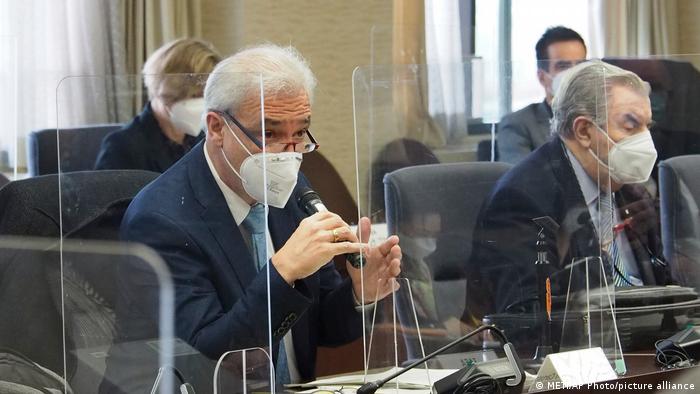A team from the International Atomic Energy Agency (IAEA) arrived in Japan on Monday to review a plan to release treated radioactive water from the destroyed Fukushima nuclear plant into the ocean.
Japan hoped the visit would help it push through the plan which is opposed by the local fishing industry and neighboring countries.
The wastewater has been kept in massive tanks since the plant that went into meltdown in 2011, and storage space is running out.
The safety and radiation effects of radiation on humans and the sea would be evaluated by the IAEA team.

Gustavo Caruso of the IAEA is leading a team evaluating Japan’s plan to discharge treated water from Fukushima.
Gustavo Caruso, director of the IAEA’s Nuclear Safety and Security department, stated, “This week, I will conduct an inspection to examine the action, plans and data, and other relevant documents to assess their compliance with the provisions in international safety standard.”
Is this water safe?
Fukushima’s cooling systems were destroyed by a massive earthquake and tsunami in 2011.
Three reactors melted down, and more than a million tons of water was used to cool the melted reactors.
Japan’s government said the water has been treated to remove dangerous isotopes. Some observers, however, note that the water would still have elevated levels of radioactive tritium. Others argue that a gradual release of waste water, diluted with seawater, would render it harmless.
Tokyo Electric Power Co., also known as TEPCO plans to gradually release water in a process that is expected to last decades.
Junichi Matsumoto (TEPCO’s chief executive for the treatment water management), stated that “We hope to further enhance the objectivity and transparency in this process through this review.”
During their five day visit, the IAEA would review details regarding the water, safety of discharge, sampling methods and the environmental impacts.
Caruso stated that the mission was “objective, credible, and science-based” and would help send messages of confidence and transparency to the Japanese people.
Who opposes the plan?
The team of 15 included experts from many countries, including South Korea (and China). Both countries were strongly opposed to Japan’s plan.
In Japan, local fishers feared it would undermine years of work to restore confidence in their seafood.
Japanese authorities conduct extensive testing on food and fish from Fukushima to ensure safety. Tokyo and the IAEA have agreed to compile an interim report on the review later this year.
lo/dj (AP, AFP)

